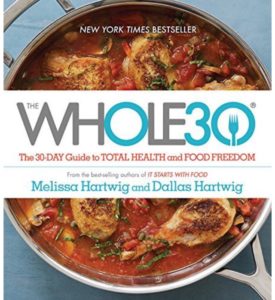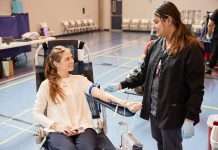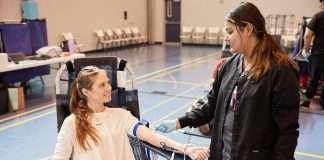 I remember when I first heard about the Whole30 and laughed at how restrictive it was. Who could possibly do that for 30 days? Who would want to do that, ever? Then, something terrible happened right after my 34th birthday. My metabolism abandoned me, abruptly and without warning. My fail-safe plan of exercising more when I needed to lose a few pounds was no longer effective. I felt tired, bloated, and hangry, with secret sugar binges justified as a way to cope with all the stress in my life.
I remember when I first heard about the Whole30 and laughed at how restrictive it was. Who could possibly do that for 30 days? Who would want to do that, ever? Then, something terrible happened right after my 34th birthday. My metabolism abandoned me, abruptly and without warning. My fail-safe plan of exercising more when I needed to lose a few pounds was no longer effective. I felt tired, bloated, and hangry, with secret sugar binges justified as a way to cope with all the stress in my life.
Serendipitously, I had several friends and my younger sister (with whom I’m slightly competitive) all try the Whole30 and loved it! As someone who hates dieting and has failed every single one I’ve ever tried within three days of starting it, I was cynical. But also curious. What is so different about this one?
I decided to buy the Whole30 Guidebook to find out more about it, and as scary as it sounded, I liked what I read. This program was not a diet, per se, but rather a way to really scale back on unhealthy foods and habits, reset your mindset, and feel healthier all at the same time. I loved how the book prepped you for each step along the way: explaining why it works, outlining pitfalls and how to cope, tons of recipes, and even an entire chapter on how to tell your friends and family that you’ve committed to the Whole30.
And it is a commitment, that is for sure. Thirty days of eating only whole foods, restricting many food groups you probably can’t imagine life without (dark chocolate and coffee creamer, anyone? And wine??) The meal prep alone was intimidating, and I knew that my chances of failing were, like, 97%.
But I decided to do it anyway. Gulp.
I’m not sure what pushed me over the Whole30 edge; maybe it was knowing my sister had done it, so therefore I had to prove I could do it, too. Maybe it was feeling sick and tired of feeling sick and tired. Maybe it was an upcoming summer of weddings and vacations that I knew I’d love to look better for.
I took my sister’s advice of not overthinking it, picked a start date and jumped in. And I did it! Trust me, no one was more surprised than I was. I owe my success in large part to my husband, who begrudgingly agreed to support me (no Easter candy for a month!), and my sister-in-law, who was my accountability partner in crime.
 Below I’ve listed the good, the bad, and some tips I learned along the way.
Below I’ve listed the good, the bad, and some tips I learned along the way.
The 5 reasons I loved the Whole30:
1. I learned tons of simple ways to incorporate new and healthy foods into my diet. My new staples? Sweet potato, hardboiled eggs (you can buy them precooked and shelled at Costco!), and avocado. I eat these things every single day, and I love it. And my family has been eating healthier, too, which makes me proud.
2. My clothes fit better. My weight didn’t change much, but my body sure did. I feel stronger and more toned, and am digging out pants from my closet I haven’t seen in years.
3. No more counting calories. It’s just not allowed. You are provided portion guidelines, but ultimately you eat until you are full. I found this part so freeing, and also appreciated that I wasn’t expected to starve myself for a month.
4. I learned how to plan meals. There’s nothing like the threat of starvation to convince you to get off your butt and start learning how to plan ahead.
5. I never felt guilty about anything I ate the entire month. This was an enlightening experience for me, and made me wonder why I choose to eat unhealthy foods so often.
The hardest parts:
1. It takes a lot of effort. Especially if you have a partner and kids. Making sure you have meals that suit everyone can be challenging at times, especially when you’re making chocolate chip pancakes on Sunday mornings, with butter and syrup…
2. Not being able to weigh myself. For better or worse, I am the kinda gal that likes my scale. I always felt it helped me stay on track and feel balanced. But the goal of Whole30 is to eat mindfully and learn how to listen to your body. Which means, in short, no weighing yourself. For 30 days.
3. No snacks. As someone who is often a grazer, this part was really hard. In fact, I did have an afternoon snack of veggies and almonds almost every day. But at least it wasn’t multiple bites of my kids’ meals or office treats all day long.
4. Coffee is just not as good without creamer. I’m sorry, but it’s true. I don’t like mine too sweet, but a little flavor goes a long way. Let’s just say it was a long month of drinking black coffee every morning.
5. Eating out is nearly impossible. Since you have to read labels on everything you eat, it’s really hard to find a place that can serve you “clean” food. The dairy restriction is particularly limiting, as almost everything has butter, cheese or yogurt in it, or gluten. I essentially avoided eating out, which was annoying, but also a healthier option, and I saved some cash.
Tips and Tricks:
1. Find an accountability partner you are comfortable with. This is essential. I texted mine every single day with the good, the bad and the ugly, and she did the same. I can’t imagine not having her there to encourage me, and I looked forward to hearing from her, too.
2. Make sure your family is somewhat on board. It would have been really hard to do this if my husband had been pigging out on ice cream every night. His willingness to limit some of his favorite foods made this so much easier for me, and it brought us closer together.
3. You need time for meal planning and grocery shopping every week. Success hinges on having the right foods available instantly, so make sure you have time to plan and shop accordingly.
In summary, the first two weeks are really tough. You feel crappy, you’re often hungry because you haven’t figured out how to eat properly yet, and you’re tired. But it does get easier, and I have to say, I feel so much better having done it. I’ve learned a lot about myself, and I feel much happier in my body, which was ultimately my goal.
Want to learn more? Check out the day by day calendar of what to expect during the Whole30 journey.




















